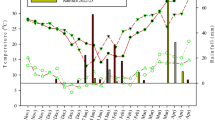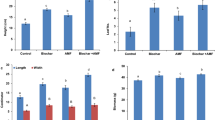Abstract.
A survey was made of copper mining spoils in Yunnan Province, southwest China. Polygonum microcephalum and Rumex hastatus were found to grow extensively on copper mining spoils in Yunnan Province as representatives of typical high-elevation copper flowers. Plants and their associated soil samples collected from several copper mines in the Province were analyzed for copper. It is found that both plant species can grow well on mining spoils rich in copper but with medium nutrient supply. P. microcephalum accumulated more copper in its organs than R. hastatus. The copper concentration in the roots of both species tended to increase with copper increase in the substrates. However, the tendency for the levels of copper in the leaves of both species to increase linearly with soil copper increase is not clear. This study suggests that both species may have some potential for phytostabilization of metal-contaminated soils and for biogeochemical prospecting.
Similar content being viewed by others
Author information
Authors and Affiliations
Additional information
Electronic Publication
Rights and permissions
About this article
Cite this article
Tang, S., Fang, Y. Copper accumulation by Polygonum microcephalum D. Don and Rumex hastatus D. Don from copper mining spoils in Yunnan Province, P.R. China. Env Geol 40, 902–907 (2001). https://doi.org/10.1007/s002540100256
Received:
Accepted:
Issue Date:
DOI: https://doi.org/10.1007/s002540100256




